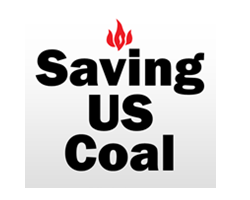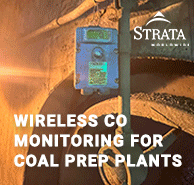CO2 and a Warmer World - Two Positives for Mankind

By Fred Palmer, J.D. Senior Fellow-CO2 Policy, Center for the Study of Carbon Dioxide and Global Change and Head of Saving Us Coal

Fred Palmer
September 11, 2020 - One month ago in August scientists at my alma mater, the University of Arizona (UofA) released a research paper seeking to nail down the temperature of the last Ice Age, referred to as the Last Glacial Maximum (LGM) of 20,000 years ago. Their answer is that the Ice Age temperature was 6 degrees Celsius (11F) colder than today. The link to the news story on the study from UofA is provided here.
It used to be that we worried about the return of an Ice Age, or a Little Ice Age, but no more. When Clinton/Gore took office in 1993 the Smithsonian National Museum of Natural History had a major display right as you walked in the door on the proposition that the world is in an interglacial and at risk from a future Ice Age. The horrors of that to human life, and of a lesser Little Ice Age, were there for all to see. And of course, with good reason as a warmer world will always be more hospitable to people than a colder world’s ice ages and little ice ages show beyond argument. But as the Gore anti coal and fossil fuel agenda took hold in Washington, Smithsonian removed the return of an Ice Age feature and the topic is now buried in a more generic, and alarmist, climate section.
Gore may not acknowledge it, but there is no doubt the last Ice Age was “adverse to human health and welfare”, in the words of the US Clean Air Act. Some 20,000 years ago, New York City was covered by 10,500 feet of ice, with much of the upper US Midwest likewise blanketed. Northern Europe was ice bound with no humans living there, either, as devastating, atmospheric CO2 content was a de minimus 180 parts per million (ppm) compared to over 400 ppm today. The literature tells that all plant life from the extreme Ice Age cold was threatened with extinction due to depressed atmospheric CO2 content, plant life needing 150 ppm of CO2 to survive.
The UofA authors go on to discuss CO2 emissions today, and are obviously concerned. They do, however make a “rookie error” in saying “for every doubling of atmospheric carbon, global temperature should increase by 3.4 C (1.5 F)”. To the contrary, per MIT Professor of Meteorology Richard Lindzen, the warming impact of increased atmospheric CO2 content rapidly diminishes the greater the concentration the closer you get to a doubling and beyond.
But that aside, and accepting that they are correct that our future robust use of fossil fuels, as modernity continues, results in a warmer world materially in excess of the “Paris Agreement” (Ex US) goal, is that a warmer world is worse for humans than an Ice Age, or a Little Ice Age? Of course, it is not. For human life expectancy, Warm is good and Cold is bad, as all recorded human history establishes. And for plant life an atmosphere of 400 + ppm and climbing is obviously a huge positive with a greener earth, better living quarters for more people living longer and a robust agriculture system using fossil fuels to harvest record crops year over year.
At the end of the Ice Age, 20,000 years ago, there were 1 million people on earth and at the birth of Christ in 1000 AD there were 250 million. By the start of the Industrial Revolution in the early 1880s, there were 1 billion people and today, just 200 years later, there are approaching 8 billion people and heading for 10 billion plus. Life expectancy was likewise limited early on with so many dying young due to lack of medical care and cold, but it has exploded with modernity and warmth. Earliest humans had a life expectancy of maybe 25-30 years but in modern societies it is 80 years and above.
All pro human metrics have improved and continue to improve in the Age of Fossil Fuels and robust CO2 emissions. Urbanization, life expectancy, and an improved Human Environment are the reality as people move to cities from living in hovels and off the land, destroying the biosphere and consuming wildlife. At the same time and as a result of fossil fuel use and more CO2, robust agriculture and a greening earth are the reality as atmospheric CO2 content continues to increase. It is submitted that the current movement in governments at all levels and large corporations to “decarbonize” and go to net zero CO2 emissions, if it truly lasts, takes hold and is imposed by strong central governments, would over time be “adverse to human health and welfare“. A self-imposed Ice Age, if you will.
As a son of the Sonoran Desert and part of a now large family that arrived in Phoenix in1900, twelve years before statehood, I embrace and close this out with a quote from a Spring, 2005 article in Arizona Geology by a geologist trained to understand the interplay of earth, climate and natural resources:
“On the basis of paleo climate studies, one can conclude that irrespective of any human influence that may be happening today, the global climate will continue to change. At some unknown times in the future, cooling will begin. that could trigger another ‘Little Ice Age’ - or the next ‘big one’. Based on the experiences of those who lived in Europe during the Little Ice Age, I hope that warming continues for at least another few decades”. (The Ice Age and Impacts on Arizona; Larry B. Fellows)
Count me in on that! And count me in on allowing the Age of Fossil Fuels to continue unabated with attendant CO2 emissions, unimpeded by the governments of the world trying to impose their own version of an Ice Age on the human community.
To make a donation to Saving US Coal, please click here.




























